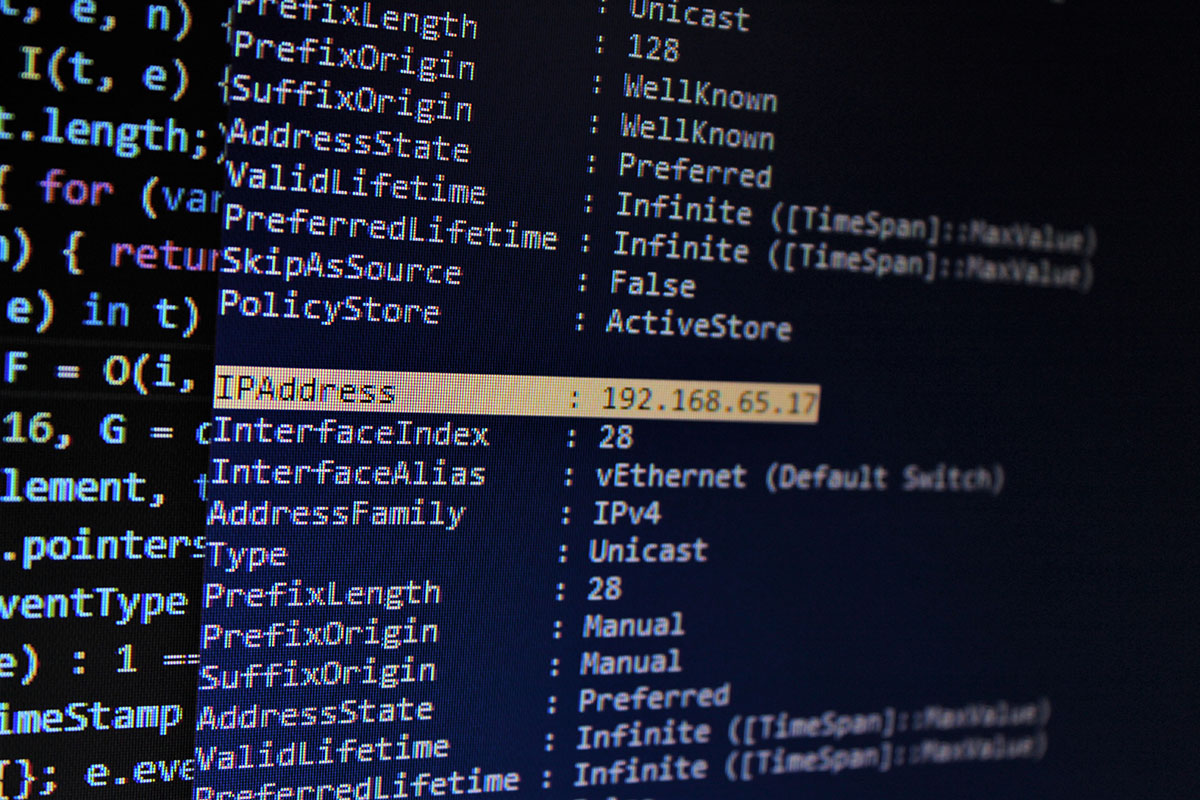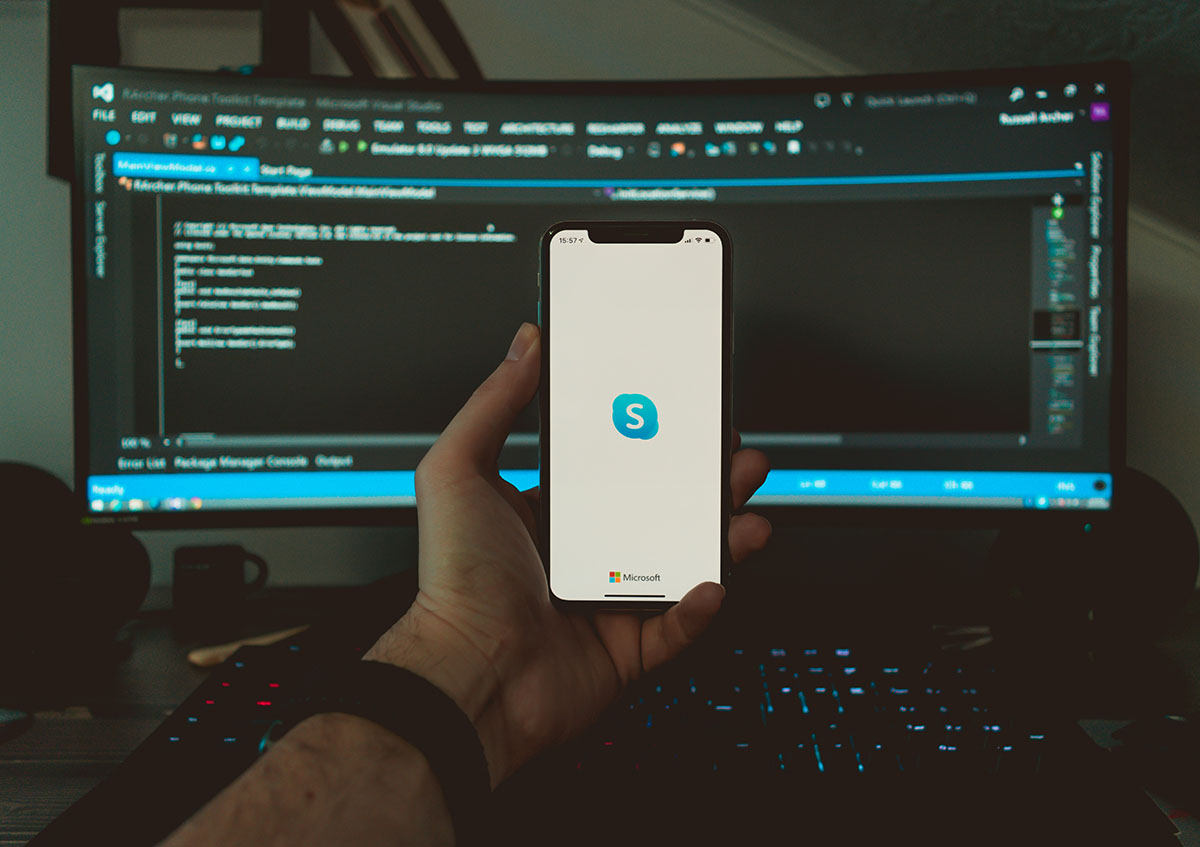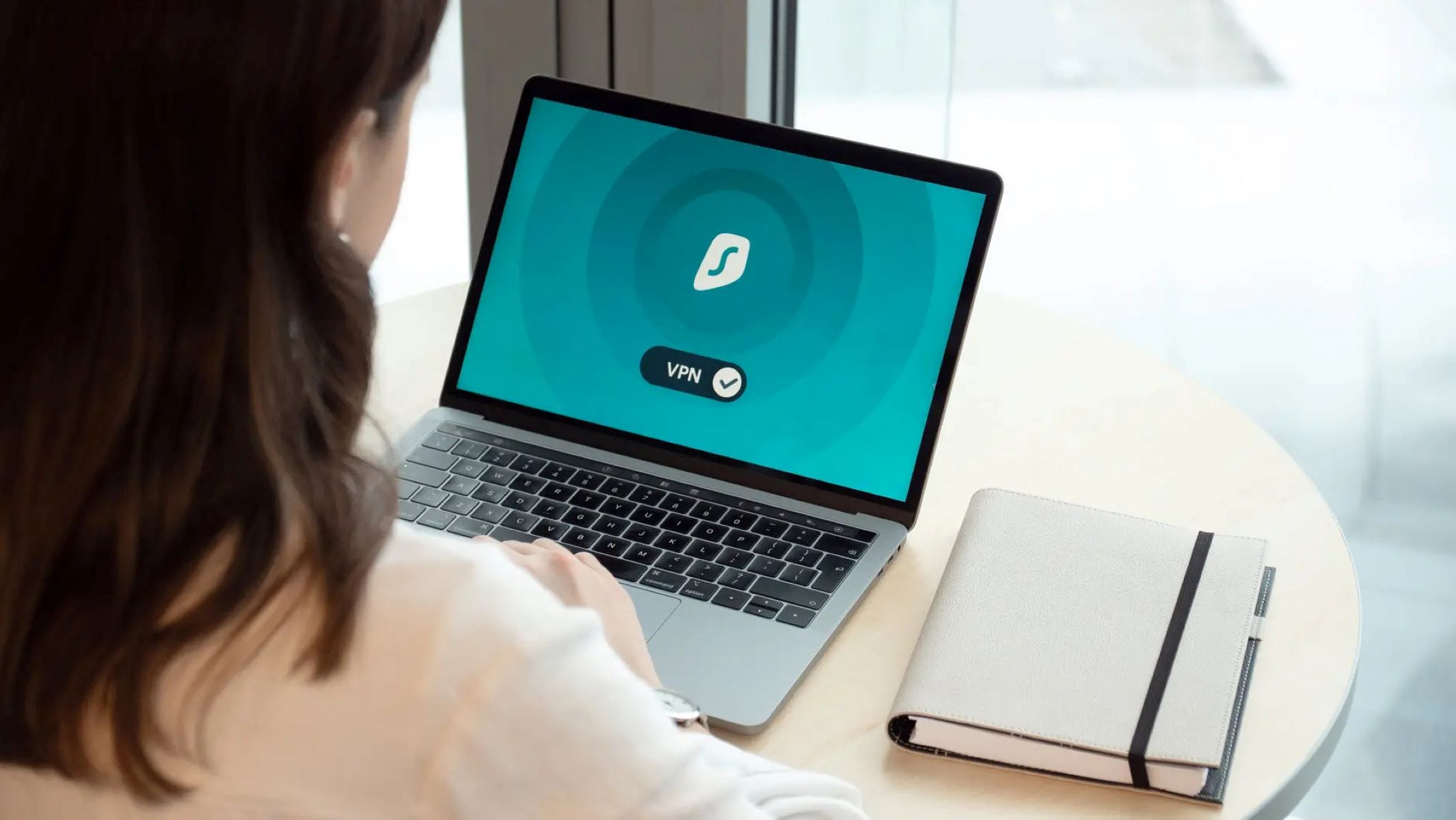What Does an IP Address Look Like?
Introduction
An IP address, short for Internet Protocol address, is a unique numerical label assigned to each device connected to a computer network that uses the Internet Protocol for communication. Think of it as a digital address that allows devices to communicate with each other and identify each other on the internet.
Just like how a physical address is used to identify the location of a house, an IP address helps in identifying the location of a device on a network. It serves as a vital component in ensuring that data packets are correctly routed across the internet.
In simpler terms, an IP address is like a digital fingerprint that distinguishes one device from another. It plays a crucial role in establishing connections, enabling data transfer, and facilitating communication over the internet.
In this article, we will dive deeper into the world of IP addresses, exploring their different types, formats, and the underlying principles behind them. By the end, you’ll have a clear understanding of what an IP address looks like.
What is an IP Address?
An IP address is a unique identifier assigned to each device in a network. It provides a way for devices to communicate with each other over the internet. The IP address consists of a series of numbers separated by periods (for IPv4 addresses) or colons (for IPv6 addresses).
Every device connected to the internet, whether it’s a computer, smartphone, or any other internet-enabled device, is assigned an IP address. This address allows data packets to be transmitted between devices and ensures that they reach their intended destination.
An IP address is divided into two parts: the network address and the host address. The network address identifies the network the device is connected to, while the host address identifies the specific device within that network.
IP addresses are crucial for internet communication because they enable devices to locate and communicate with each other. Without IP addresses, it would be impossible for devices to send and receive data over the internet.
There are two main versions of IP addresses in use today: IPv4 and IPv6. IPv4 addresses are 32-bit addresses expressed as four sets of numbers ranging from 0 to 255. IPv6 addresses, on the other hand, are 128-bit addresses expressed as eight sets of hexadecimal numbers separated by colons.
In the next sections, we’ll explore these different types of IP addresses in more detail and learn about their specific characteristics and uses.
IPv4 Address
IPv4, which stands for Internet Protocol version 4, is the most widely used version of IP addresses. It uses a 32-bit format and consists of four sets of numbers, separated by periods, with each set ranging from 0 to 255.
Each set of numbers in an IPv4 address represents an octet, which can be seen as a combination of eight bits. These 32 bits allow for a total of approximately 4.3 billion unique IP addresses.
The format of an IPv4 address is commonly seen as a series of four numbers, such as 192.168.0.1. The first number represents the network address, while the remaining three numbers represent the host address.
IPv4 addresses are divided into different classes: Class A, Class B, Class C, and so on. The class of an IPv4 address determines its range and allocation. For example, Class A addresses have a range from 1.0.0.0 to 126.255.255.255 and are typically assigned to large networks.
Public IPv4 addresses are globally unique and are used to identify devices on the internet. On the other hand, private IPv4 addresses are used within private networks, such as home or office networks, and are not accessible from the internet.
However, due to the exponential growth of internet-connected devices, the pool of available IPv4 addresses has become depleted. The adoption of IPv6 has become necessary to address this issue, but IPv4 addresses are still widely used today.
In the next section, we will explore the newer version of IP addresses, IPv6, and its advantages over IPv4.
IPv6 Address
IPv6, which stands for Internet Protocol version 6, is the successor to IPv4. It was introduced to overcome the limitations of IPv4, namely the scarcity of available addresses. IPv6 uses a 128-bit format and consists of eight sets of hexadecimal numbers, separated by colons.
The format of an IPv6 address is significantly different from that of an IPv4 address. Instead of decimal numbers, it uses a combination of numbers (0-9) and letters (A-F) to represent each section.
The increased length of IPv6 addresses allows for a significantly larger number of unique addresses compared to IPv4. In fact, IPv6 can provide approximately 3.4×10^38 addresses, ensuring that the demand for addresses can be met for the foreseeable future.
IPv6 addresses are designed to provide improved security, enhanced network functionality, and more efficient routing. Additionally, they offer support for new technologies such as Internet of Things (IoT) devices, which require a large number of unique addresses.
In an IPv6 address, the first few sets of numbers represent the network prefix, which identifies the network. The remaining sets represent the interface identifier, which identifies the specific device on that network.
One of the key features of IPv6 is its support for both unicast and multicast addresses. Unicast addresses are used for one-to-one communication, while multicast addresses are used for one-to-many communication.
Transition from IPv4 to IPv6 is ongoing, and many devices and networks are now capable of supporting both address types. However, due to the widespread use of IPv4, it may take time for full adoption of IPv6 to be achieved.
In the following sections, we will explore other aspects of IP addresses, such as the binary representation and how to find your IP address.
Binary Representation of IP Address
Although IP addresses are commonly represented in decimal format, they are actually stored and transmitted in binary form. Understanding the binary representation can provide insights into the underlying structure of an IP address.
An IPv4 address consists of 32 bits, which can be represented as a sequence of ones (1s) and zeros (0s). Each set of eight bits is called an octet, and it corresponds to one of the four numbers in the decimal representation of the IP address.
Let’s take an example: the IPv4 address 192.168.0.1. In binary form, it can be represented as 11000000.10101000.00000000.00000001. Each octet is converted to its binary equivalent, with leading zeroes added to make it a complete set of eight bits.
The IPv6 address, being 128 bits long, has a much larger binary representation. However, the principle remains the same. Each section of the address is converted to a binary representation of 16 bits, separated by colons.
The binary representation of an IP address is not commonly used in everyday situations. However, it is useful for network administrators and technicians for troubleshooting and network analysis purposes.
Being able to understand the binary representation of an IP address can provide a deeper understanding of how devices communicate over the internet. However, for most users, the decimal representation of IP addresses is more practical and easier to work with.
In the next section, we will learn how to find your IP address on different devices.
How to Find Your IP Address
If you’re curious about your own IP address, there are several methods you can use to find it on different devices:
- On a Windows computer: Click the Start menu, type “cmd” in the search bar, and open the Command Prompt. Then, type “ipconfig” and press Enter. Look for the “IPv4 Address” or “IP Address” under the network adapter you’re currently connected to.
- On a Mac: Go to the Apple menu, select System Preferences, and then click on Network. Choose your active network connection on the left side and look for the “IPv4 Address” or “IP Address” displayed on the right side.
- On a smartphone or tablet: The process may vary depending on the operating system, but generally, you can find your IP address by going to the Settings app, selecting Network or Wi-Fi, and looking for the IP address listed under your active network connection.
- Using an online IP address lookup tool: If you want to find the IP address of a device on a remote network, you can use an online IP address lookup tool. Simply visit one of these websites, enter the domain or hostname, and the tool will provide you with the associated IP address.
Remember that your IP address may change from time to time, especially if you’re connected to the internet through a dynamic IP setup. In such cases, your internet service provider (ISP) assigns a new IP address each time you connect to the network.
By knowing your IP address, you can troubleshoot network issues, set up port forwarding, or access devices on your home network. It can also be useful for identifying your approximate geographic location, although this information may not always be accurate or precise.
In the next section, we will explore the concepts of public and private IP addresses.
Public vs. Private IP Address
When it comes to IP addresses, there are two main categories: public and private. Understanding the difference between them is crucial for securing your network and ensuring effective communication.
A public IP address is assigned by your internet service provider (ISP) and is unique to your network. It allows devices on the internet to identify and communicate with your network. Public IP addresses are globally accessible and can be used to access your network from anywhere in the world.
In contrast, a private IP address is used within a local network, such as your home or office network. These addresses are not directly accessible from the internet, and they provide a level of security by keeping local devices hidden from external threats.
Private IP addresses are defined in specific ranges reserved for this purpose. The most commonly used private IP address ranges are:
- 10.0.0.0 to 10.255.255.255 (10.0.0.0/8)
- 172.16.0.0 to 172.31.255.255 (172.16.0.0/12)
- 192.168.0.0 to 192.168.255.255 (192.168.0.0/16)
These private IP addresses can be assigned to devices within your network, allowing them to communicate with each other. However, in order to connect to the internet, devices with private IP addresses require a mechanism called Network Address Translation (NAT), which converts private IP addresses to a single public IP address.
Using private IP addresses is beneficial for several reasons. It helps conserve public IP addresses, as only one public IP address is required for an entire network, regardless of the number of devices connected. Additionally, it provides an added layer of security by hiding the internal structure of your network from external threats.
It’s important to note that private IP addresses cannot be used to access devices or services on other networks directly. For that, you would need to use port forwarding or establish a Virtual Private Network (VPN) connection.
In the next section, we will explore the difference between dynamic and static IP addresses.
Dynamic vs. Static IP Address
When it comes to IP addresses, they can be further classified as dynamic or static. These terms refer to how the IP address is assigned and whether it changes over time.
A dynamic IP address is assigned to a device by the network’s DHCP (Dynamic Host Configuration Protocol) server. Each time a device connects to the network, it is assigned a temporary IP address from a pool of available addresses. When the device disconnects, the IP address is released back into the pool for future use.
The main advantage of using dynamic IP addresses is that it allows for efficient utilization of the IP address pool. Since the IP addresses are temporary and are assigned as needed, it ensures that all devices on the network have an address when they require it.
In contrast, a static IP address is manually assigned to a device and remains fixed. It does not change each time the device connects or disconnects from the network. Static IP addresses are typically used for devices that require a consistent, reliable, and easily identifiable address, such as servers or network devices.
The benefits of using static IP addresses include easier access to network resources, improved network performance, and better security control. Since the IP address is fixed, it simplifies the management of network devices and allows for more accurate network monitoring and troubleshooting.
However, static IP addresses come with some drawbacks. They require manual configuration, which can be time-consuming and prone to errors. Additionally, static IP addresses may not be easily available due to the limited number of public IP addresses.
It’s important to weigh the pros and cons before deciding whether to use dynamic or static IP addresses for your devices.
In the next section, we will compare the differences between IPv4 and IPv6 addresses.
IPv4 vs. IPv6
IPv4 and IPv6 are different versions of the Internet Protocol, each with its own characteristics and advantages. Understanding the differences between them is important for the future of internet connectivity.
IPv4, which has been in use since the early days of the internet, uses a 32-bit addressing scheme and has a limited number of available addresses. This limitation led to the development of IPv6, which uses a 128-bit addressing scheme and provides an exponentially larger address pool.
One of the key advantages of IPv6 is its ability to provide a virtually limitless number of unique IP addresses. This is crucial in an era where an increasing number of devices are connected to the internet, including smartphones, IoT devices, and more. IPv6 ensures that the demand for IP addresses can be met effectively.
Another advantage of IPv6 is improved security. The larger address space allows for built-in security features, such as IPsec (Internet Protocol Security) encryption, which enhances data confidentiality and integrity. IPv6 also mitigates certain vulnerabilities present in IPv4, making it more resistant to hacking and malicious activities.
While IPv6 offers numerous benefits, the transition from IPv4 to IPv6 has been a gradual and ongoing process. This is because IPv4 remains widely supported and continues to be used extensively throughout the internet. However, as the pool of available IPv4 addresses continues to dwindle, the adoption of IPv6 is becoming increasingly necessary.
Both IPv4 and IPv6 will coexist for the foreseeable future, with many networks and devices supporting both protocols. This allows for a gradual migration to IPv6 while maintaining compatibility with IPv4 infrastructure.
It’s important for network administrators, service providers, and individuals to understand the differences between IPv4 and IPv6 and the implications of transitioning to IPv6. As technology continues to advance and connectivity demands increase, IPv6 will play a crucial role in shaping the future of the internet.
Conclusion
Understanding what an IP address looks like is fundamental for navigating the vast network of the internet. Whether it’s an IPv4 address with its decimal format or an IPv6 address with its hexadecimal representation, IP addresses serve as the digital groundwork for communication between devices.
We explored the differences between public and private IP addresses, and how they play a crucial role in securing networks and enabling efficient communication. Dynamic and static IP addresses were also discussed, highlighting the benefits and considerations of each type.
Additionally, we delved into the binary representation of IP addresses, which allows us to comprehend the underlying structure of these numerical labels. We learned how to find our own IP addresses on various devices and explored the transition from IPv4 to IPv6, highlighting the advantages that the latter brings in terms of addressing limitations and improved security.
As the internet continues to grow and evolve, IP addresses will remain a fundamental part of our digital landscape. Whether it’s IPv4 or IPv6, dynamic or static, public or private, IP addresses serve as the backbone of internet communication, ensuring that devices can connect, communicate, and share information.
By gaining a comprehensive understanding of IP addresses, we equip ourselves with the knowledge to navigate the complexities of the internet and harness its vast potential for connectivity and collaboration.

























